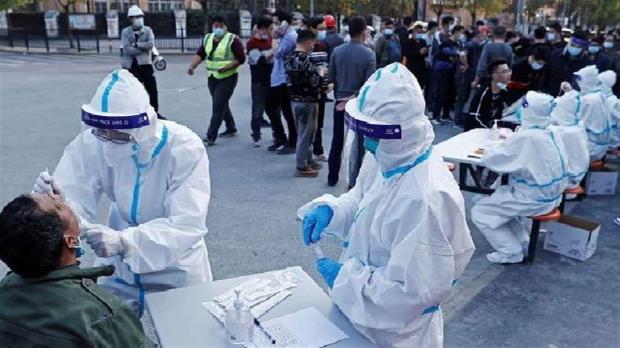The surge of COVID-19 infections in China in the past few weeks has instigated a set of some concerning warnings that the country could possibly witness over a million deaths in the coming months, despite officials presenting a different picture of the entire scenario.
The country reported five deaths on Monday while two fatalities were reported on Sunday, taking the total death count associated with the virus to 5,242. Over to that a total of 2700 new cases were reported on Monday. Far much lower than the 40,000 cases that were reported a couple of weeks ago. Several global media reported that the situation might be far more grave than it is actually being posed by the Chinese authorities.
What is happening that is leading to the surge of COVID-19 cases in the country?
China has been facing a surge in cases ever since the country relaxed the suffocating restrictions last month following rare public interests. The decision has led to the rapid spread of the daily cases and even went on to hit new records in the first two weeks of this month.
Moreover, the official daily numbers are presenting a totally contrasting story to the images and reports coming in from hospitals around the country. Hospitals are being overwhelmed, by shortages of flu medicines, and schools moving back online.
The other striking reason that is at the center of all that is happening in China for the past few weeks is China’s stringent zero-covid policy that is in practice for the past three years.
Zero COVID Policy involved extremely restrictive measures to deal with any surge in cases. Every known case, even asymptomatic, was mandatorily hospitalized, small outbreaks triggered hard lockdowns, and suspected cases, and all their contacts, were kept under long isolation. Foreign travelers had to mandatorily go through 10 days of isolation.
The measures despite being extremely painful turned out to be effective in checking the spread of the virus for three years. But Behind the Scene, it was also there that a large portion of the population was never infected and so herd immunity couldn’t be achieved, and a large population was never infected thereby rendering it extremely susceptible.
So, once the virus was able to break through the defenses, as it sometimes did, it spread rapidly in the population. That is what happened in March-April this year when China saw an explosion of cases for the first time.
Fast-transmitting variant:
The dominant virus strain in China is BF.7, a sub-variant of Omicron that has been in circulation for over a year now. There are over 500 Omicron sub-variants currently in circulation.
Everything to know about Omicron variant BF.7, responsible for the ongoing COVID onslaught in China
BF.7 is the name for the BA.5.2.1.7, which itself has evolved from the BA.5 sub-variant. BF.7 is not unique to China. It accounted for over 5 percent of the cases in the US in October and over 7 percent of the cases in the UK.
Although Dr. Ekta Gupta a prominent Virologist has a different view on the surge of cases in China with the dominant variant prevalent, she said, “There is no scientific evidence to suggest that there is one particular variant that is driving the surge in China. Neither is there evidence to suggest that any new variant is the cause. If you look at the Gisaid data (a global database of Sars-CoV-2 genomes), nothing vastly different has been uploaded from the country.”
She said it was the large susceptible population that was the key driver of the surge, further she adds, “From what I can understand, the strict lockdowns in China meant that a huge proportion of the population did not get the infection. We have seen that a natural infection provides a wider and longer immunity against Covid-19. In India now we are seeing people out and about, even without masks, but we are not reporting a high number of cases because people have a hybrid immunity from natural infection as well as high levels of vaccination.”
The status of Vaccination in China:
Based, on the records available China has administered nearly about 3.5 billion doses of vaccines, although the penetration among the 80-plus population has fairly been low.
In addition, there have been questioning marks over the effectiveness of the two Chinese vaccines in use, Sinovac and Sinopharm. Moreover, like most of the Chinese authorities’ data, there is uncertainty over the exact number of booster shots that have been administered in the country.
Vaccines become increasingly less effective over time, and in the absence of both a booster as well as natural immunity, the population becomes extremely vulnerable.
While the surge is restricted to China at present, there are fears prevailing among other well-recognized virologists around the world that it might spread to other countries as well, since international travel has returned to close to pre covid levels now.
